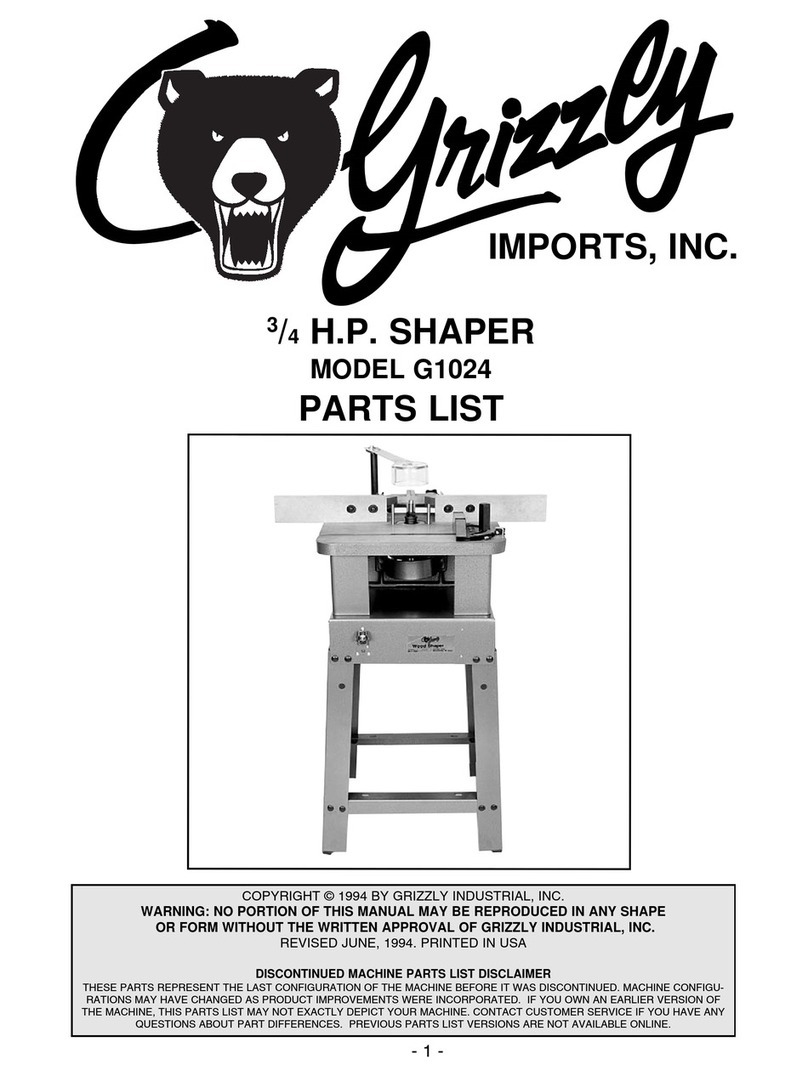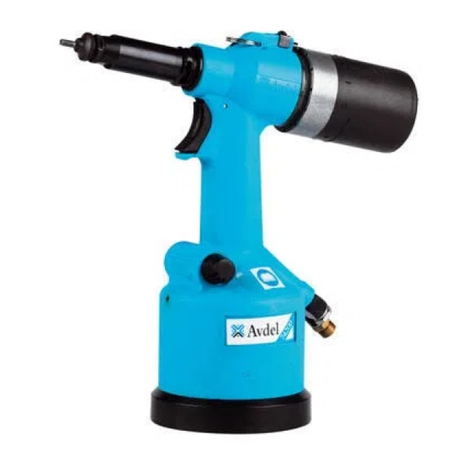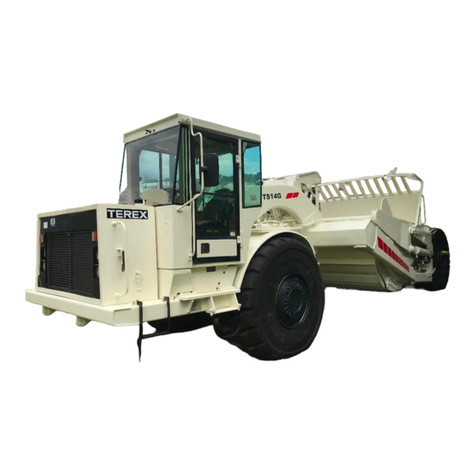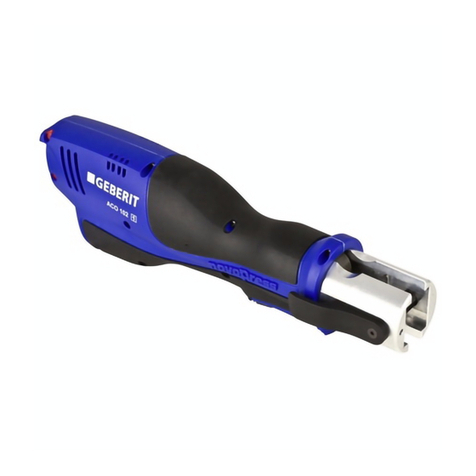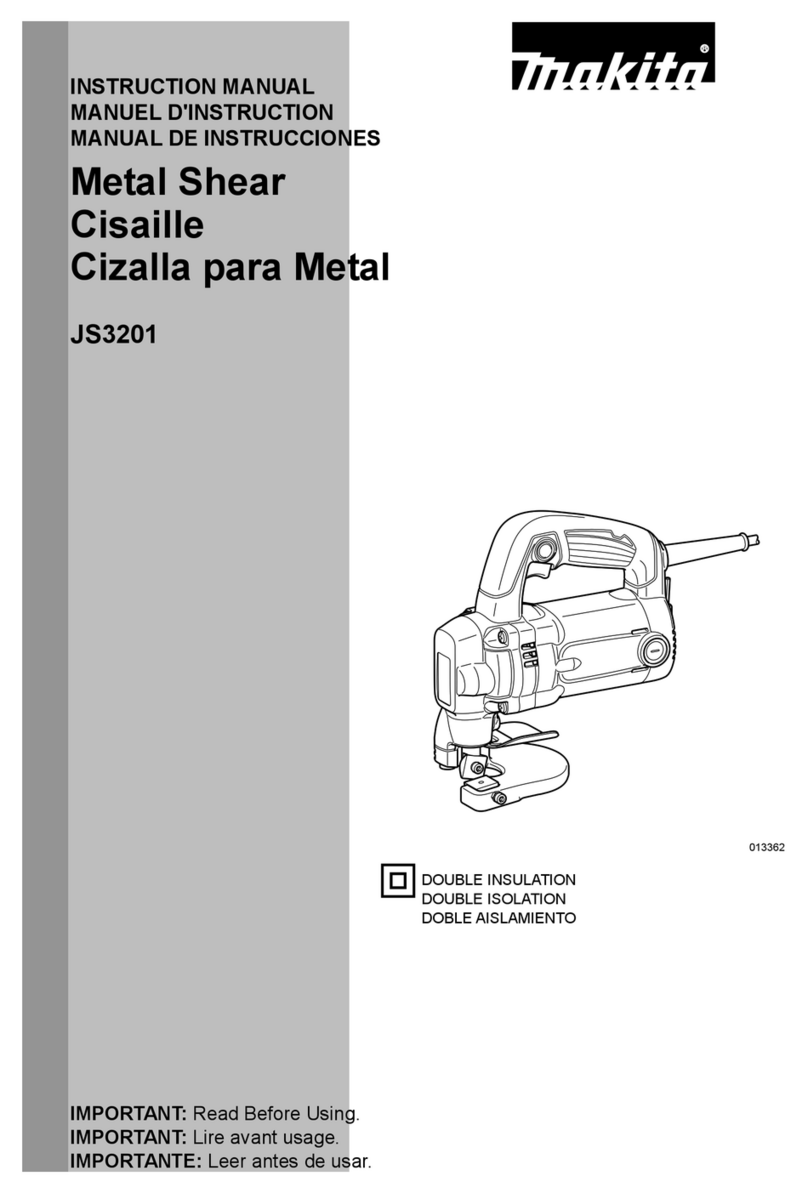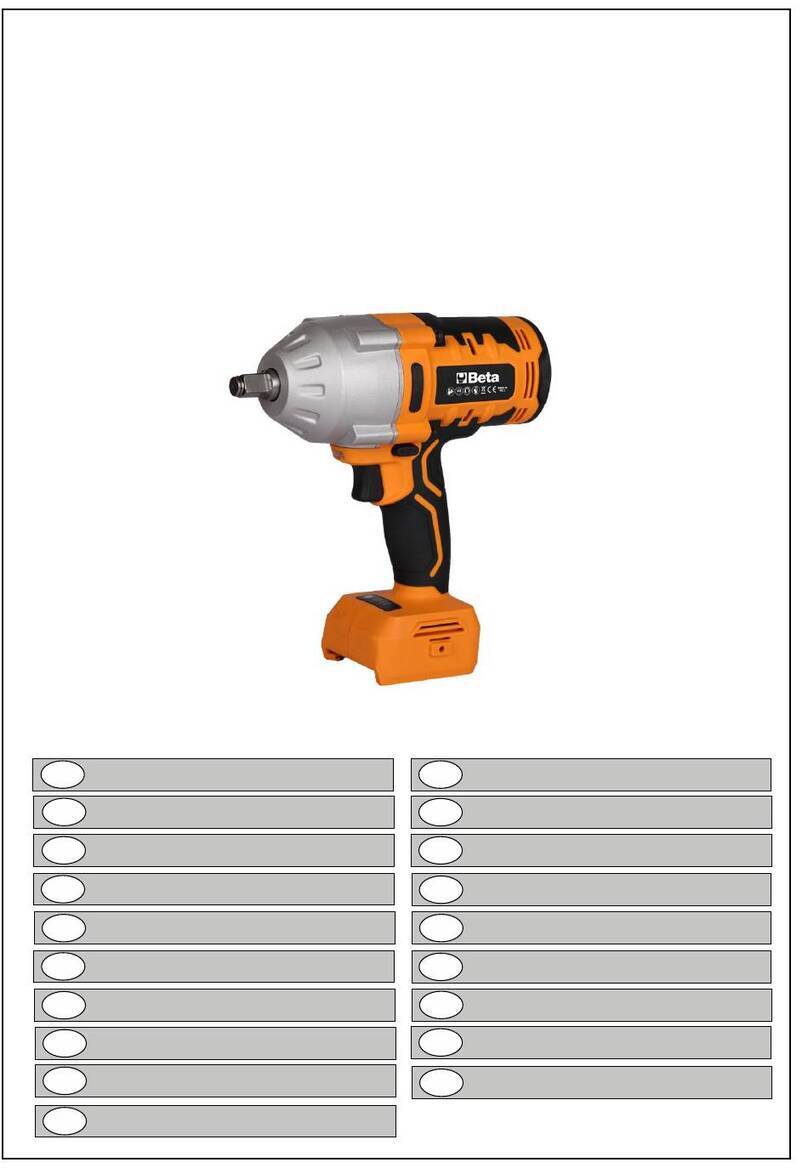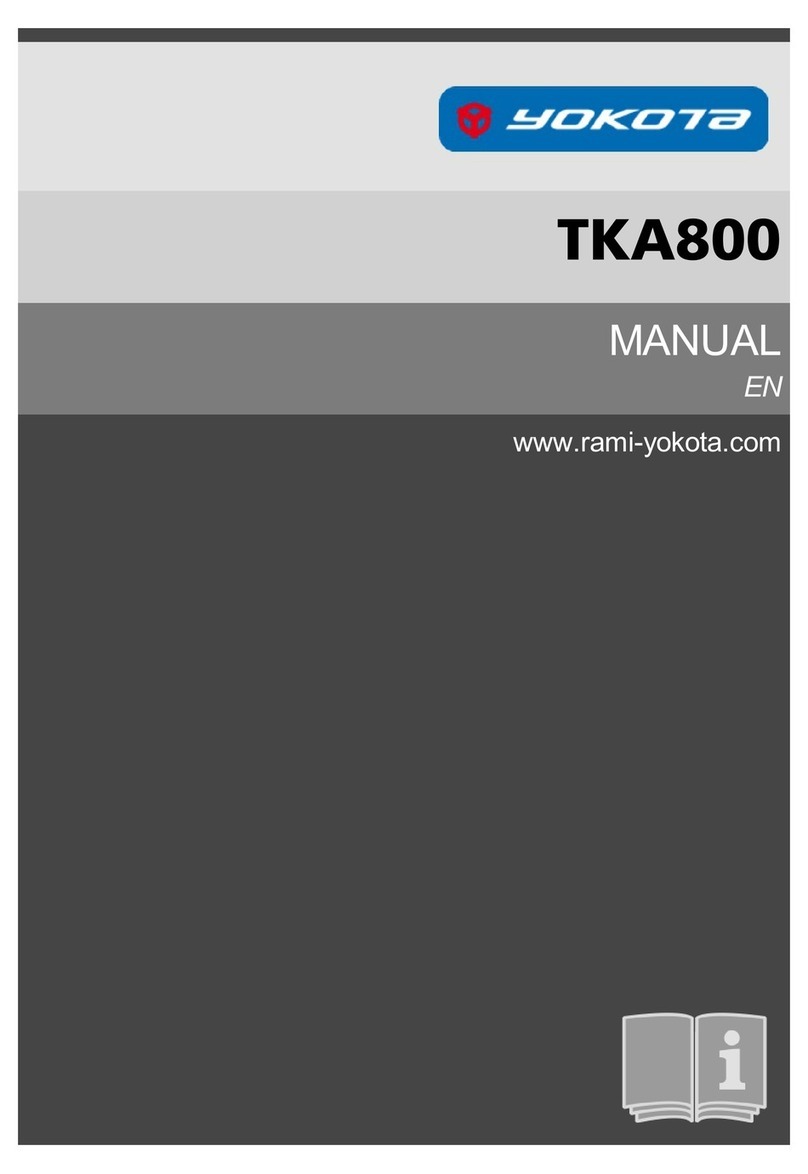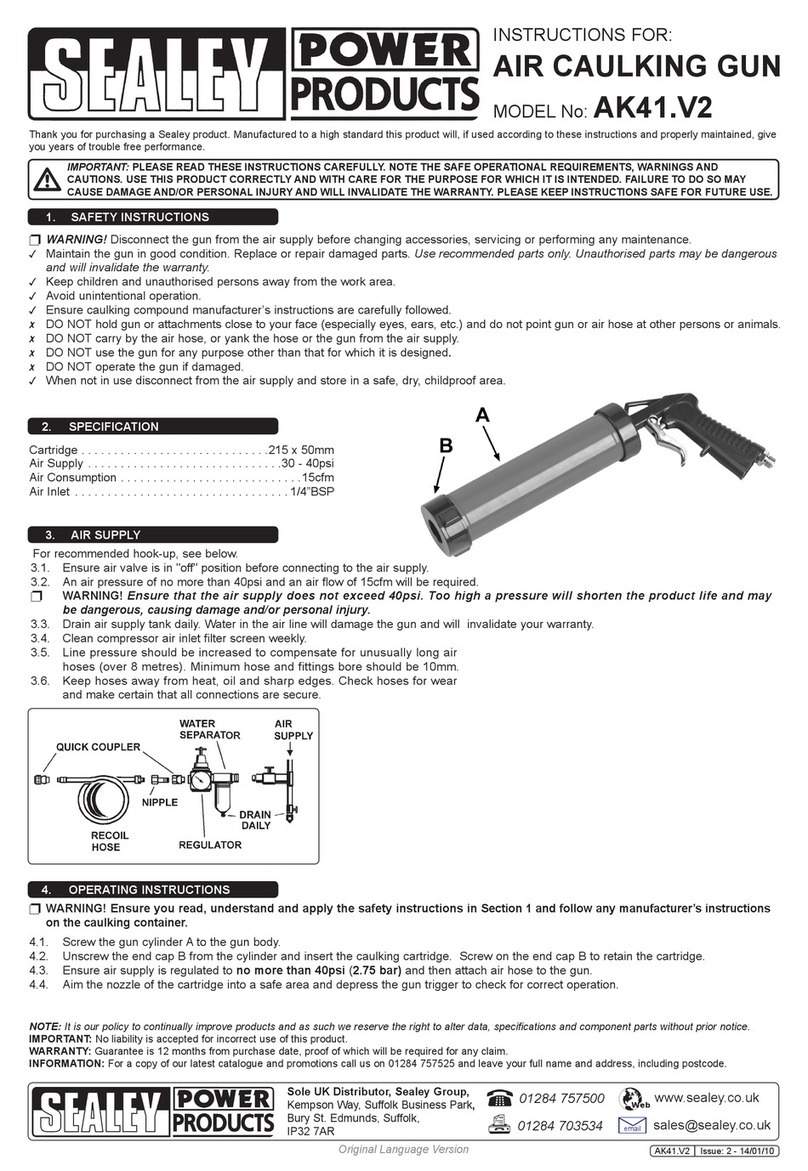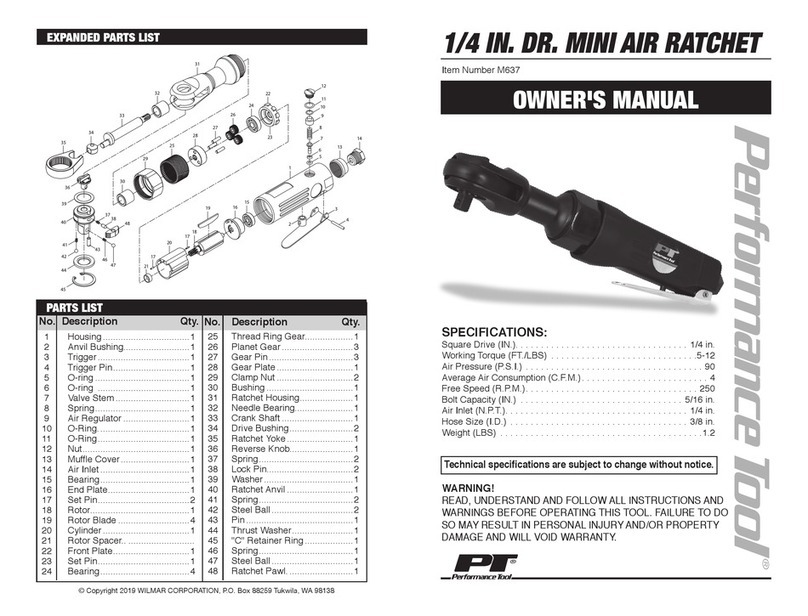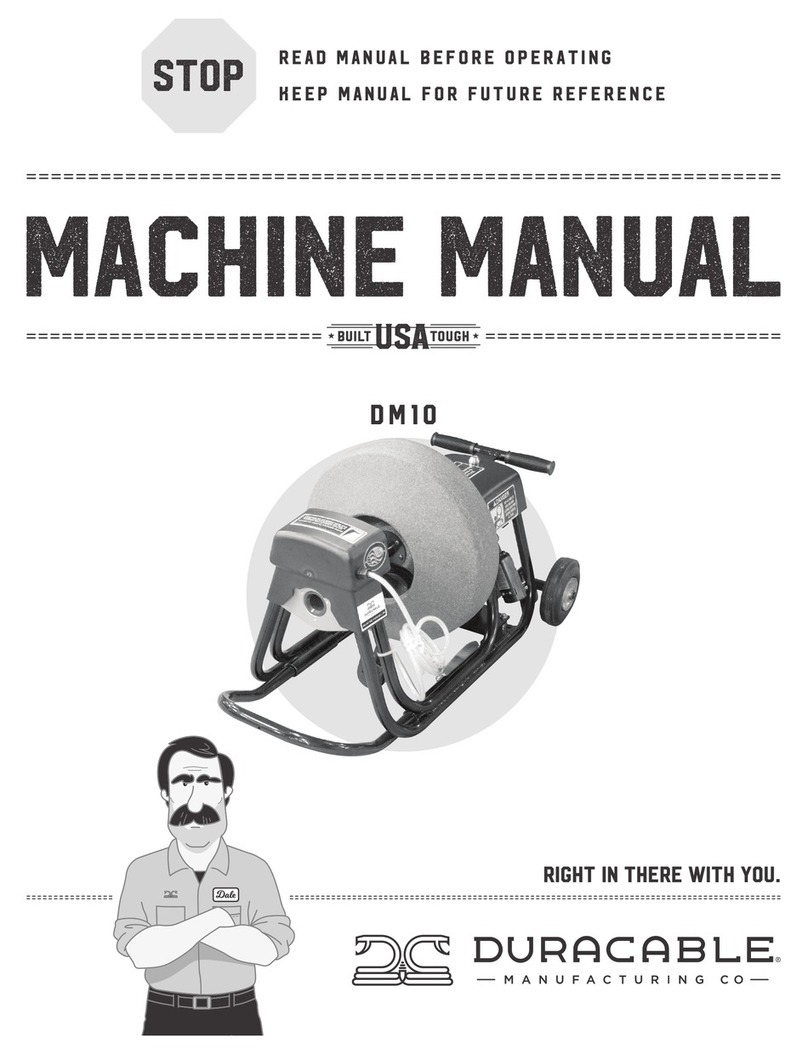Nouvag 5040nou User manual

EN
REF 31893EN, V47/18
Micro Compass Saw MSS 5000, REF nou
Operating instructions
• The Micro Saw is delivered in non sterile condition. Clean, disinfect,
and sterilize the Micro Saw before the first application and
immediately after each use!
• Operate the Micro Saw with a maximum speed of 15 000 rpm.
• Attache the Micro Saw to the motor only when it’s standing still.
• Perform manipulations on the instrument only when the motor is at
a standstill.
• Any guarantees on our part or other claims against us become void in
the case of inappropriate use of the electronic motor or failure to comply
with our instructions!
• Without a saw blade clamped, the Micro Saw should not be stored with
the tensioning mechanism tightened.
• The instrument may only be used by competent and trained personnel.
Safety measures
Intended use / indication
The saws are intended for bone-working surgery. This includes ENT surgery, maxillofacial surgery, plastic surgery, neurosurgery and hand surgery. With the
bone saw and clamped saw blade (standalone medical device), a piece of bone is removed to correct misalignments. In dental facilities, this is used in jaw
osteotomy to convert the jawbone. The saws may only be operated by expert and trained personnel. The intended use is obvious to the trained user.
Contraindication / Limitations
Relative or absolute contra indications can arise from the general medical diagnose, or in special cases by a significantly increased risk to the patient through
the use of motor-driven systems. Relevant cases in the literature must be taken into consideration.
Symbols
LOT number Autoclave at 135°C Suitable for thermal
disinfection
Date of manufacturing Order number
Warning Manufacturer CE symbol with
notified body
Serial number Observe instructions
for use
Important
information
Do not reuse
Technical data, Electronic motor 21 Overview
nou
Weight 122 g
Max. torque 6 Ncm
Max. speed 15 000 rpm
Transmission ratio 1 : 1
Coupling to motor ISO 3964
Saw blade shank 10 mm
Saw blade thickness 0.40 mm
Operation
Coupling handpieces with a groove with the electronic motor with twist protection lock
Saw blade
with shank
Fastening nut End wrench
Saw handpiece
Cooling clip Coupling for
motor attachment
Collet
Twist protection lock with
release button.
Handpiece coupling with
groove for twist protection.
Align groove at handpiece with the twist protection
and connect handpiece with electronic motor by
pressing the button. Check for proper seating.
Press the button and decouple handpiece from
electronic motor.
Loosen fastening nut with end
wrench.
Continue opening the nut with
your fingers.
Remove the saw blade from the
collet and replace if necessary.
Loosen the cooling clip by pulling
while turning it back and forth.
Remove the cooling clip from
the saw handpiece.
Disassembly and assembly of the components to replace the saw blades and to feed the components into the reprocessing
Possible combinations
Micro Compass Saw MSS 5000, REF nou
Is exclusively used:
•In combination with the surgical motor systems HighSurg 11 (REF 3361),
HighSurg 11 OFA-Drill (REF 3363) and HighSurg 30 (REF 3360), which control
the sawing handpiece via the upstream electronic motor 21 and enable set-
tings for speed and torque according to the tools used.
•In combination with the surgical motor system TCM 3000 BL (REF 3285),
which controls the sawing handpiece via the upstream electronic motor 21
and holds a program with a fixed speed for the micro saw.
•In combination with the MD 30 implant motor system (REF 3330), which
controls the sawing handpiece via the upstream electronic motor 21 and
enables settings for speed and torque according to the tools used.
Ambient conditions
Transport and storage: Operation:
Relative humidity: Max. 90 % Max. 80 %
Temperature: 0 – 60°C 10 – 30°C
Atmospheric pressure: 700 – 1060 hPa 800 – 1060 hPa
Wrong combination of products
Damage to the product and injury to the patient, user or third parties are
possible.
•Only use the dierent products together if the purpose and the relevant
technical data, such as working lengths, diameters, and so on match.
•Always follow the instructions for use of the products used in combination.
Reprocessing instructions
Reprocessing
restrictions
Frequent reprocessing has only a limited impact on the handpiece. The end of the products service life is normally determined by wear and dam-
age through use. The instrument is designed for 250 sterilization cycles.
General handling 1. The micro saw must be thoroughly cleaned, disinfected and sterilised before initial operation (products straight from the factory) and also
immediately following each use. Only a cleaned and disinfected instrument permits proper sterilisation!
2. The electronic motor should always be treated with utmost care when being transported, cleaned, serviced, sterilised and stored.
3. We recommend the use of mild alkaline and enzymatic cleaners with as low a content of silicate as possible in order to avoid staining (silicatis-
ing) the instruments.
4. Only commercial grade DGHM-/VAH-listed agents may be used for cleaning and disinfection. See these agent manufacturers’ specifications
for the method of use, action time and suitability of disinfection and cleaning substances.
5. Follow precisely the operating instructions of the devices and chemicals etcetera, used during preparation.
6. Adhere exactly to the chemical dosages, action times and exposure temperatures during cleaning and disinfection.
7. The end of the product service life is determined by wear and damage through use. The micro saw is designed for 250 sterilisation cycles.
8. Do not overload washer. Avoid rinsing blind spots. Pay attention to secure storage in the machine.
9. Follow the applicable regulations in your country for reprocessing medical devices.
10. Only the cooling clip may be cleaned in an ultrasonic bath. The micro saw must never be subjected to ultrasonic cleaning! This will impair the
functionality.
11. Nouvag AG recommends using a screen basket with a rinse strip from 3mach (NOUVAG REF 51401), a re-usable container for comfortable
preparation and storage (including transport) of products. The screen basket can be used to keep products safe both during the rinsing cycle
and also during and after sterilisation until the products are used. The screen basket is suitable for use with sterilisation paper or a rigid ster-
ilisation container. It has no barrier eect itself in order to maintain sterility.
Attention! In relation to patients with Creutzfeldt Jakob disease or its variant (vCJK) no responsibility can be assumed for re-use of the micro saw. The
Robert-Koch Institute recommends removing used products from circulation after use in order to avoid infecting other patients, users and third
parties.
Preparation at
the point of use
After surgery immediately remove blood, secretion, tissue and bone residue with a disposable cloth/paper towel, do not allow to dry! Dried
residues cause corrosion.
Safe-keeping
and transport
Contaminated products must be stored and transported to the preparation site in a closed container to avoid damaging the products and the
contamination of the environment.
Cleaning and
disinfection,
pre-cleaning
Remove saw blade, cooling tube, clips for the cooling tube attachment and cooling clip from the micro saw handpiece.
1. Wipe visible impurities with a moist expandable cloth/tissue paper from the micro saw and accessories.
2. Brush the handpiece and accessories under running tap water using a soft brush (manufacturer Insitumed GmbH, REF MED100.33).
3. Rinse the outer surface of the micro saw handpiece for 10 seconds with a water pistol (at a pressure of at least 2.0 bar; manufacturer for ex-
ample HEGA Medical, REF 6010 or 7060). Local tap water is sucient for this purpose, since the last step is always a machine cleaning with
deionized water, so possibly hard water with lime traces from the pre-cleaning cannot remain on the handpiece.
4. Rinse the cooling clip with a cleaning gun with a jet nozzle attachment (manufacturer HEGA Medical, REF 4270) for at least 30 seconds.

Cleaning Mechanical cleaning
1. After pre-cleaning place the micro saw and its accessories in the strainer basket.
2. Mechanical cleaning is only successful if the pre-cleaning, described above, is ad-
hered to!
3. Cleaning is done using the Vario TD programme in the cleaning and disinfection
unit (CDU). For the cleaning process it is advisable to use DI water (fully desalinated
water).
4. After completing the cleaning programme (inc. Thermal disinfection) check the micro
saw, the nut and the cooling clip for visible contamination in grooves and gaps. Re-
peat the cleaning cycle, if necessary.
Automatic cleaning process (Vario TD programme)
1. Pre-clean with cold water for 4 minutes.
2. Empty
3. Clean for 5 minutes at 55°C with 0.5 % alkaline or
at 40°C with 0.5 % enzymatic cleaner.
4. Empty
5. Neutralise with cold water for 3 minutes.
6. Empty
7. Inter-rinse for 2 minutes with cold water.
8. Empty
Disinfection Mechanical disinfection
The cleaning/disinfection unit has a thermal disinfection programme which follows
after the cleaning. When performing mechanical thermal disinfection, give due consid-
eration to the national requirements relating to the A0 value (see DIN EN ISO 15883-1).
We recommend an A0 value of 3.000 for the instrument. Disinfection must be carried
out with DI water.
Warning
When inadequately rinsed or exposed to the disin-
fectant or detergent for too long, the instrument can
corrode. Please see the corresponding detergent and
disinfectant’s package insert for dwell times.
Drying Mechanical drying
Dry the micro saw using the cleaning/disinfection unit’s (CDU) drying cycle. If required,
manual drying can also be achieved by using a lint-free cloth. When drying manually, take
particular care with the grooves and gaps of the instrument. Then spray the instrument
again with NouClean spray.
Every CDU must provide a corresponding drying procedure through the manufacturer (see
ISO 15883-1). Please follow the corresponding CDU-manufacturer’s directions and operating
instructions.
Manual drying
Set up the micro saw in an upright position without
the nut and the cooling clip attached.
Dry the instrument for at least 30 minutes. Then
spray it with NouClean spray. Afterwards reassemble
the nut and the cooling clip back onto the instru-
ment.
Manual cleaning
and disinfection
1. Immerse the micro saw handpiece after pre-cleaning for 15 minutes in a bath with enzymatic cleaner (for example 2 %
ID 215, Dürr Dental). Clean accessories such as e.g. the cooling clip and the nut for 15 minutes in an ultrasonic bath (1 %
ID215). Follow the instructions of the manufacturer of the detergent.
2. Perform a complete post-clean of the product under running drinking water, using a soft brush. Intensely rinse, if
there is any cavities and lumens existing, with a water pressure gun (or similar) for at least 30 seconds.
3. To remove the detergent, rinse the products under running city water (drinking quality) for at least 30 seconds.
Warning
Do not clean micro saw
(handpiece) in an ultra-
sonic bath!
Manual
disinfection
After cleaning, immerse the products for 5 minutes in a bath with a suitable disinfectant (for example 2 % ID 212, Dürr Dental). It must be ensured that
all surfaces are completely wetted with the disinfectant. Follow the manufacturers instructions of the disinfectant.
After disinfection thoroughly rinse all products with deionised water to remove the disinfectant ( > 1 min.).
Manual
drying
Set up the micro saw handpiece vertically, separated from the cooling clip, to make sure the outflow of water is favored. Dry products with a lint-free
paper towel. Then dry with suitable compressed air in accordance with the RKI recommendation. Pay particular attention to the drying of hard to
reach areas.
Inspection
and care
1. First unscrew the union nut and remove the cooling clip.
2. Perform a visual inspection for damage, corrosion and wear.
3. In the next step, spray the saw handpiece for cleaning and care. Nouvag AG recommends the use
of NouClean spray. Place the spray attachment (REF 1958) on the spray can and spray the saw
handpiece from the coupling side with NouClean spray for about 3 seconds until only clear liquid
escapes from the saw handpiece.
4. Then wipe with a damp cloth (observe the instructions for use of the product).
5. After spraying the saw handpiece, re-install the cooling clip on the saw handpiece and screw the
union nut onto the collet chuck.
Sterilisation
Sterilisation of the micro saw handpiece is performed with a fractionated pre-vacuum steam sterilisation technique (in accordance with DIN EN 556-1/
DIN EN ISO 17665-1) giving due consideration to the respective national requirements.
Minimum requirements:
1. Pre-vacuum phases: 3 3. Holding time: At least 3 minutes (full cycle).
2. Sterilisation temperature: At least 132°C. 4. Drying time: At least 20 minutes (max. 30 minutes).
When sterilising several products during one sterilisation cycle, do not exceed the maximum steriliser load. (see manufacturer’s details).
A drying cycle must be added in the case of autoclaves without a post-vacuum function. After sterilisation an immaculate sterilisation result must
be detected by examining the appropriate indications. According to the Robert-Koch Institute preparation ends with the documented release for
use of the medical device.
Storage Storing the sterile packaging
The sterilised product must be stored away from dust, humidity and contamination. Dur-
ing storage, direct sunlight should be safely avoided. After the expiry date has passed,
do not use the product any longer.
Handling the sterile packaging
Before taking out the product, check for the packaging to
be intact. When taking out the product, follow the respec-
tive aseptic procedures.
Information
for validating
the preparation
The above preparation process has been verified by a validated procedure. The following materials and machines were used:
1. Alkaline cleaner: Neodisher® Mediclean; Chemische Fabrik Dr. Weigert GmbH & Co. KG
2. Enzymatic cleaner: Neodisher® MediZyme; Chemische Fabrik Dr. Weigert GmbH & Co. KG
3. Cleaning and disinfection unit: Miele G 7836 CD
4. Rack trolley: Miele E429
5. Strainer basket/flush socket bar: 3mach (NOUVAG REF 51401)
6. Autoclave: Selectomat 666-HP (MMM)
7. Sterile packaging: Sterisheet 100; Broemeda Amcor Flexibles GmbH
Chemicals and machines other than those mentioned can also be used. In such a case consult the manufacturers or suppliers to find out whether their
products confer the same performance as the products that the procedure was validated with.
If you should opt for a dierent procedure for reprocessing to the one given above, you are required to correspondingly establish the suitability
Note There is no experience available from conducting other sterilisation procedures such as plasma sterilisation, low temperature sterilisation procedure,
etc. Users bear full responsibility if they use a procedure which diers from the validated sterilisation procedure described!
Attention! Please also comply with the applicable legislation in your country and the medical practice or hospital’s hygiene rules. This especially applies to the
varying requirements for an eective inactivation of prions.
REF 1958
Accessories and spare parts Saw blades Cutting depth Form/Field PU*
Description Units
........... End wrench...............................................................................
.............. Spray adapter for Nou-Clean Spray.......................................
....................... for maintenance and care of handpieces ............................
.............. NouClean-Spray ......................................................................
............. Cooling clip................................................................................
nou...... Set of saw blades for micro compass saw ............................
(REF nou nou, nou, nou, nou; /Version)......
Troubleshooting Manufacturer and Service points
Nouvag AG •St.Gallerstr. – •CH- Goldach
Tel. + ()
Nouvag GmbH •Schulthaißstr. •D- Konstanz
Tel. + () - •Fax + () -
Nouvag USA, LLC • Airport Freeway •Suite
Haltom City, Texas •USA
Phone + - •Fax + - •Toll free no. ()
The complete list of all Nouvag-authorized service points worldwide are to be found on our Website, under: www.nouvag.com/en/service/service provider
Disposal
When disposing of instruments, local legislations must be observed. Do not dispose of instruments with household waste. Observe the national regulations for the
disposal of infectious waste.
Problem Cause Solution
Motor is running
but saw is not
moving
Saw handpiece is not
correctly coupled
with motor
Press saw handpiece firmly
against the motor until it snaps
into place. Check seat with
countermovement.
Saw blade is not
moving regularly
Saw blade is not cor-
rectly clamped
Clamp saw blade correctly
and tighten nut with the end
wrench.
mm Rhinology nou
mm streight nou
mm streight nou
mm streight nou
mm streight nou
mm streight nou
mm rounded nou
mm rounded nou
* PU: Packaging unit
Rasps Work length Total length PU
mm mm nou
mm mm nou
mm mm nou
mm mm nou
mm mm nou
Table of contents
Other Nouvag Power Tools manuals
Popular Power Tools manuals by other brands

Remington
Remington 500V operating instructions
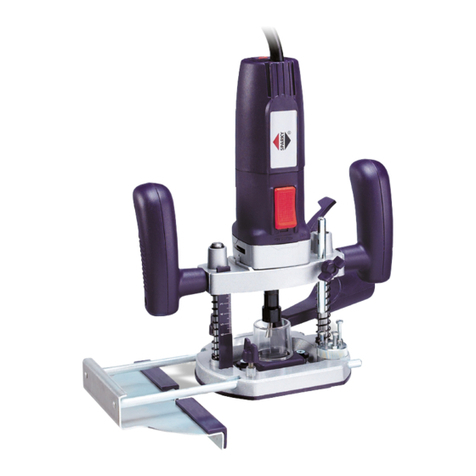
Sparky Group
Sparky Group X 52E Original instructions
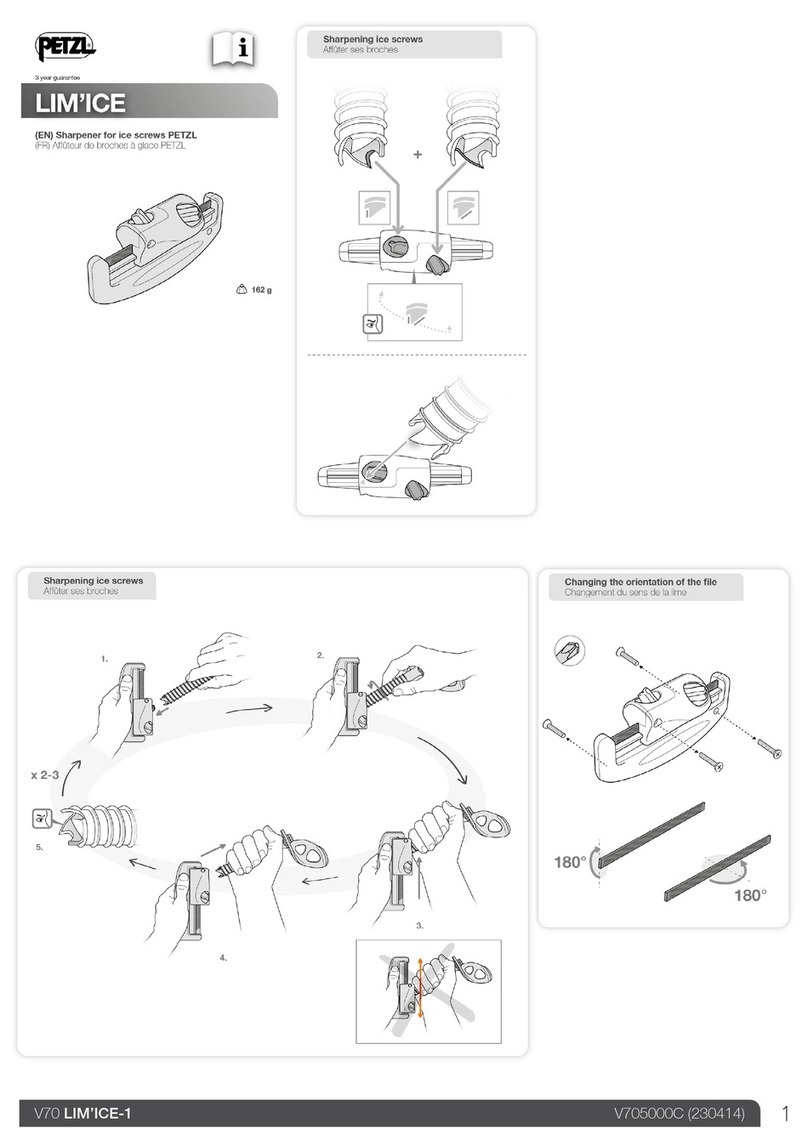
Petzl
Petzl Lim'Ice-1 quick start guide
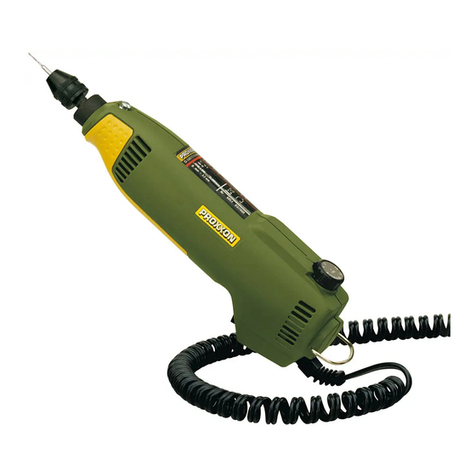
Proxxon
Proxxon FBS 12/EF manual
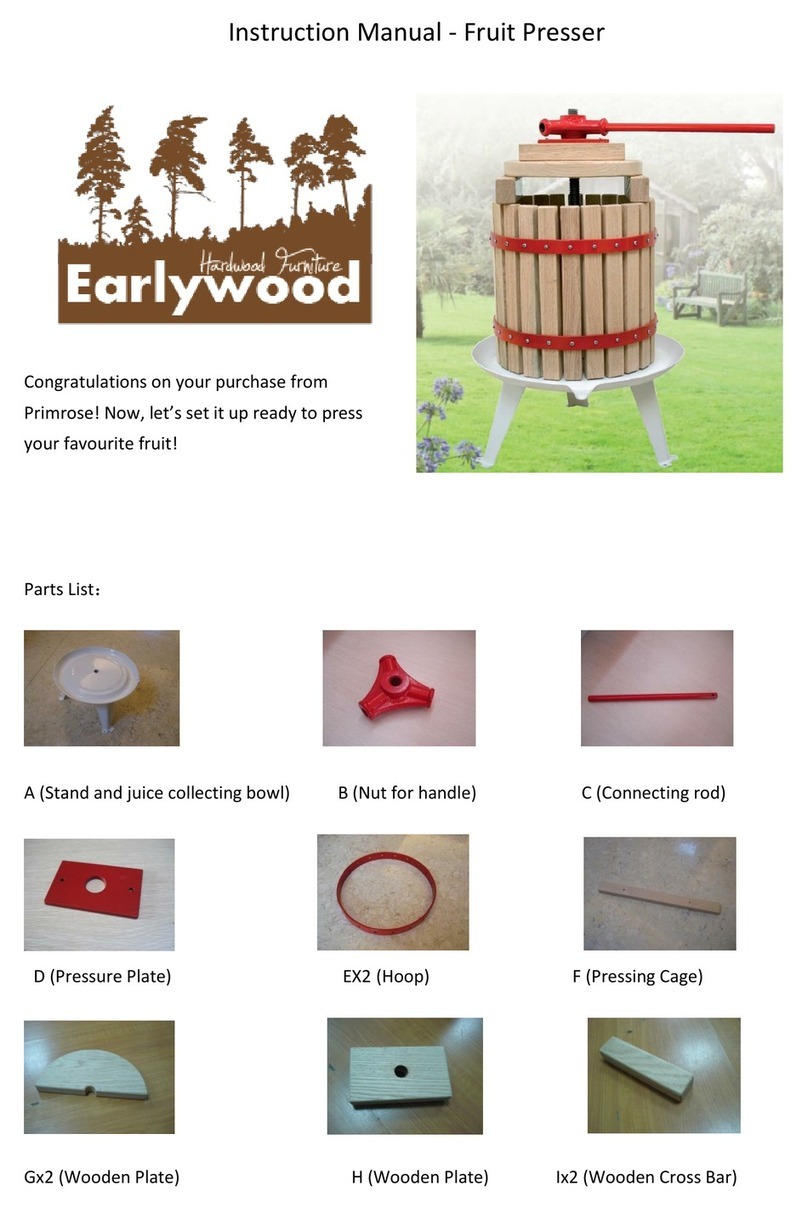
Earlywood
Earlywood Fruit Presser instruction manual
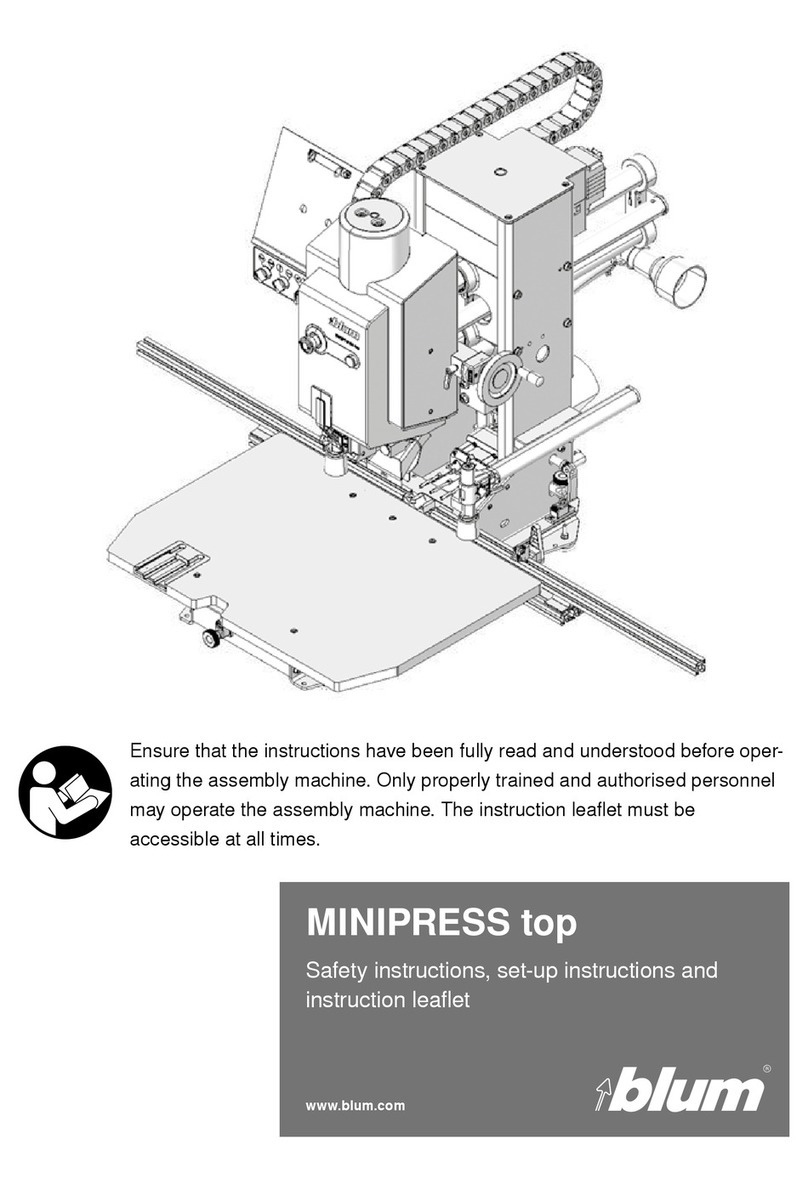
BLUM
BLUM MINIPRESS top M70.2000 Safety instructions, set-up instructions and instruction leaflet

